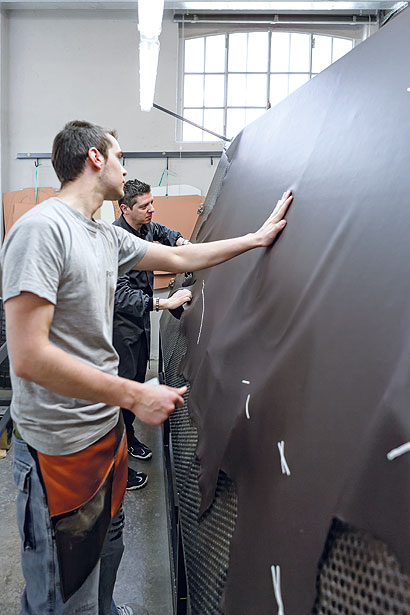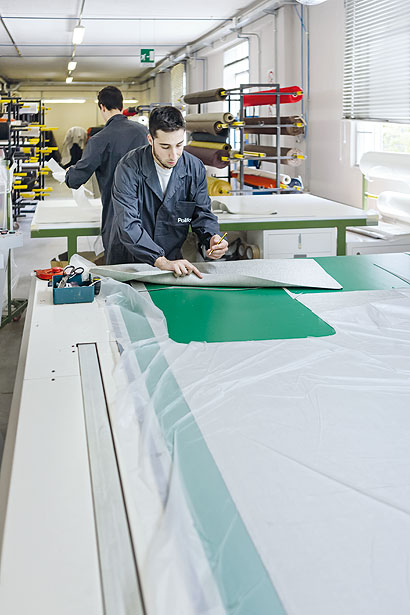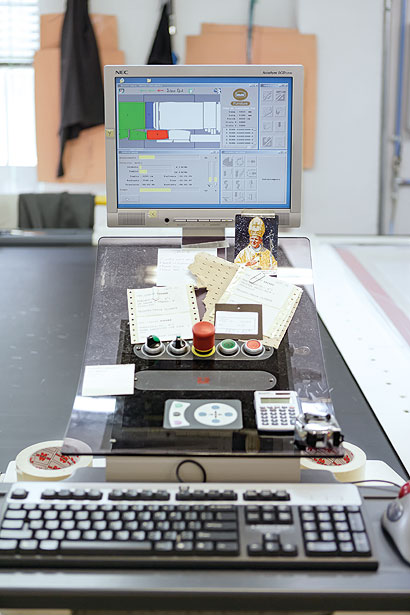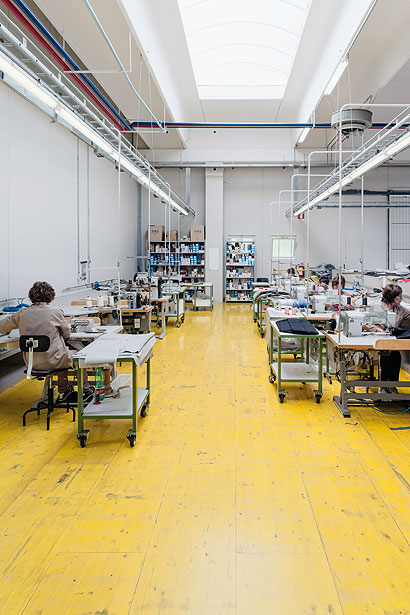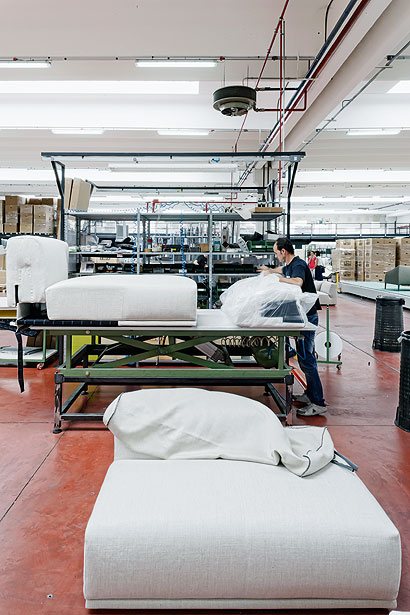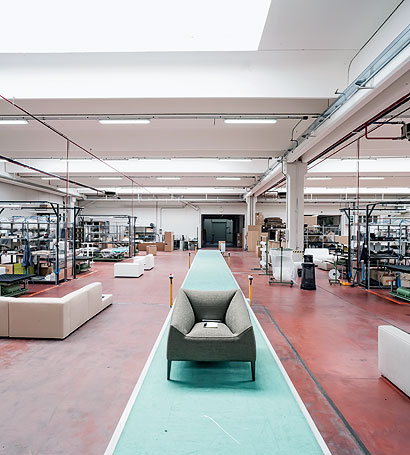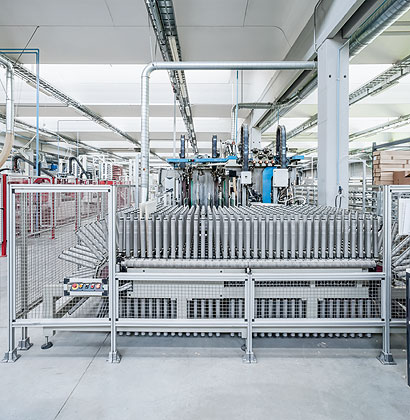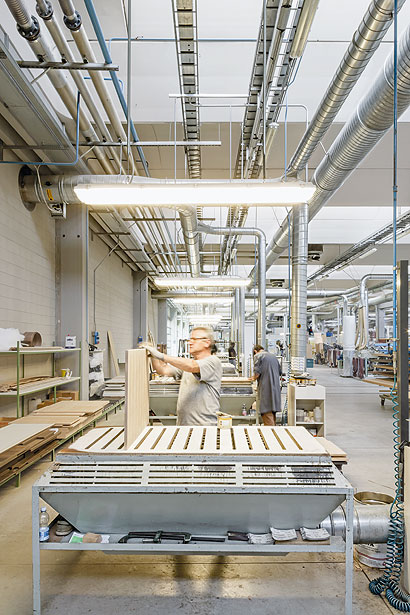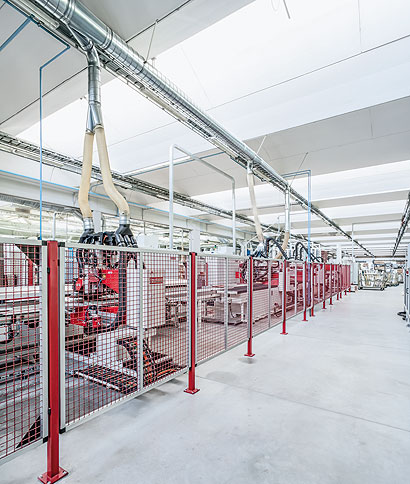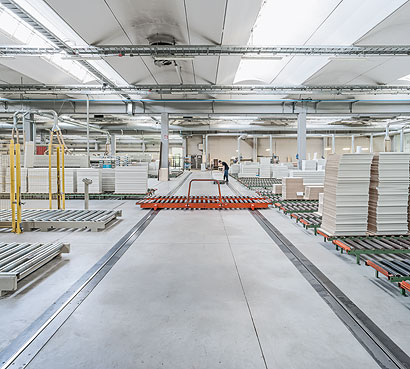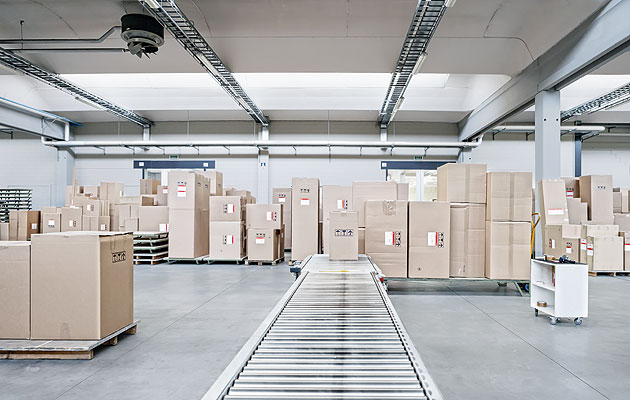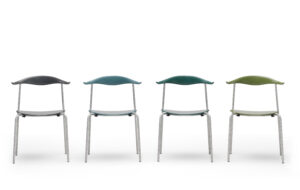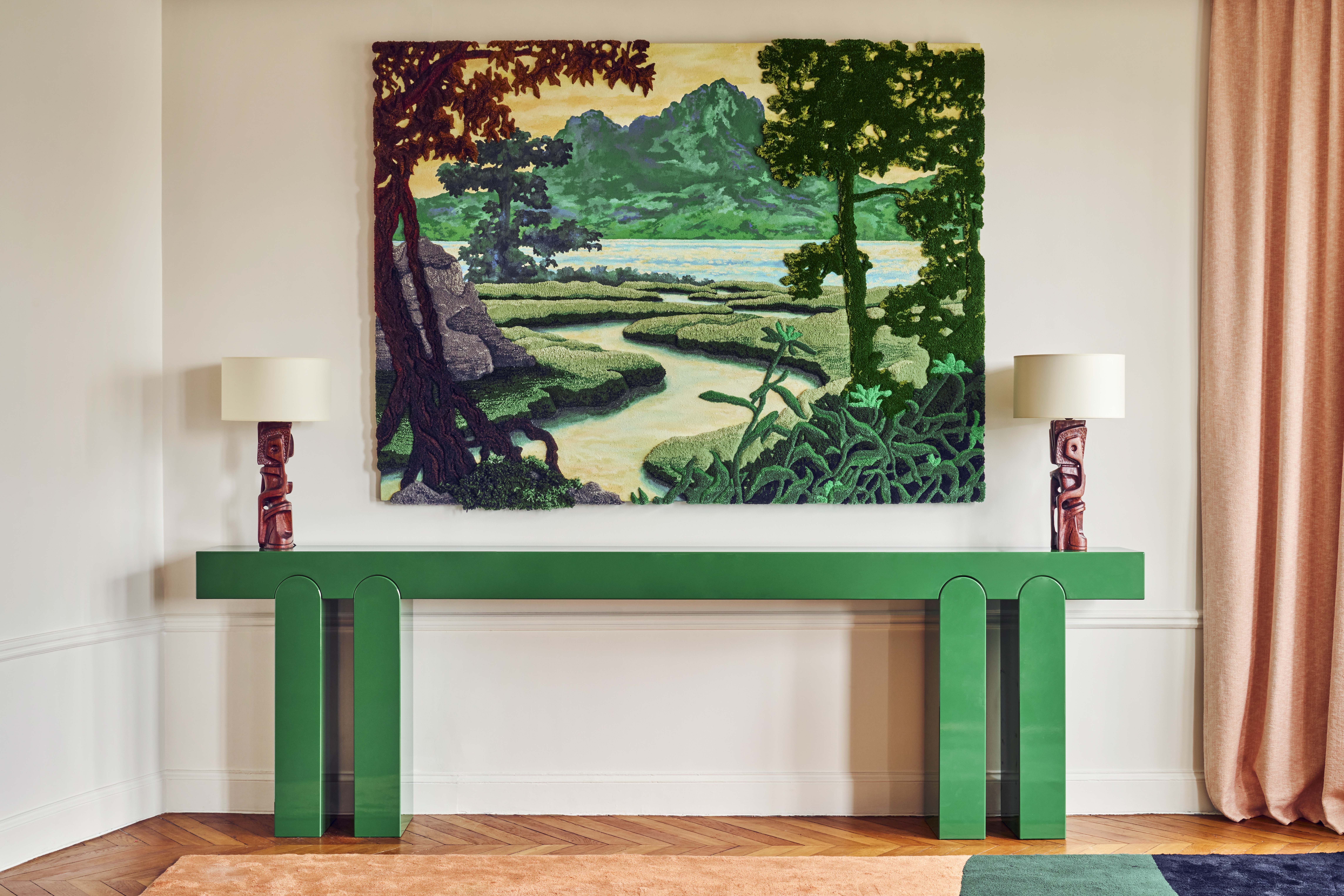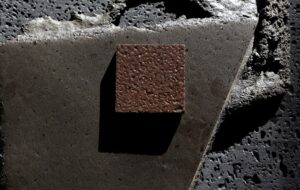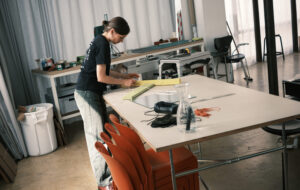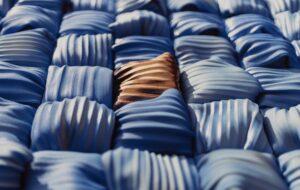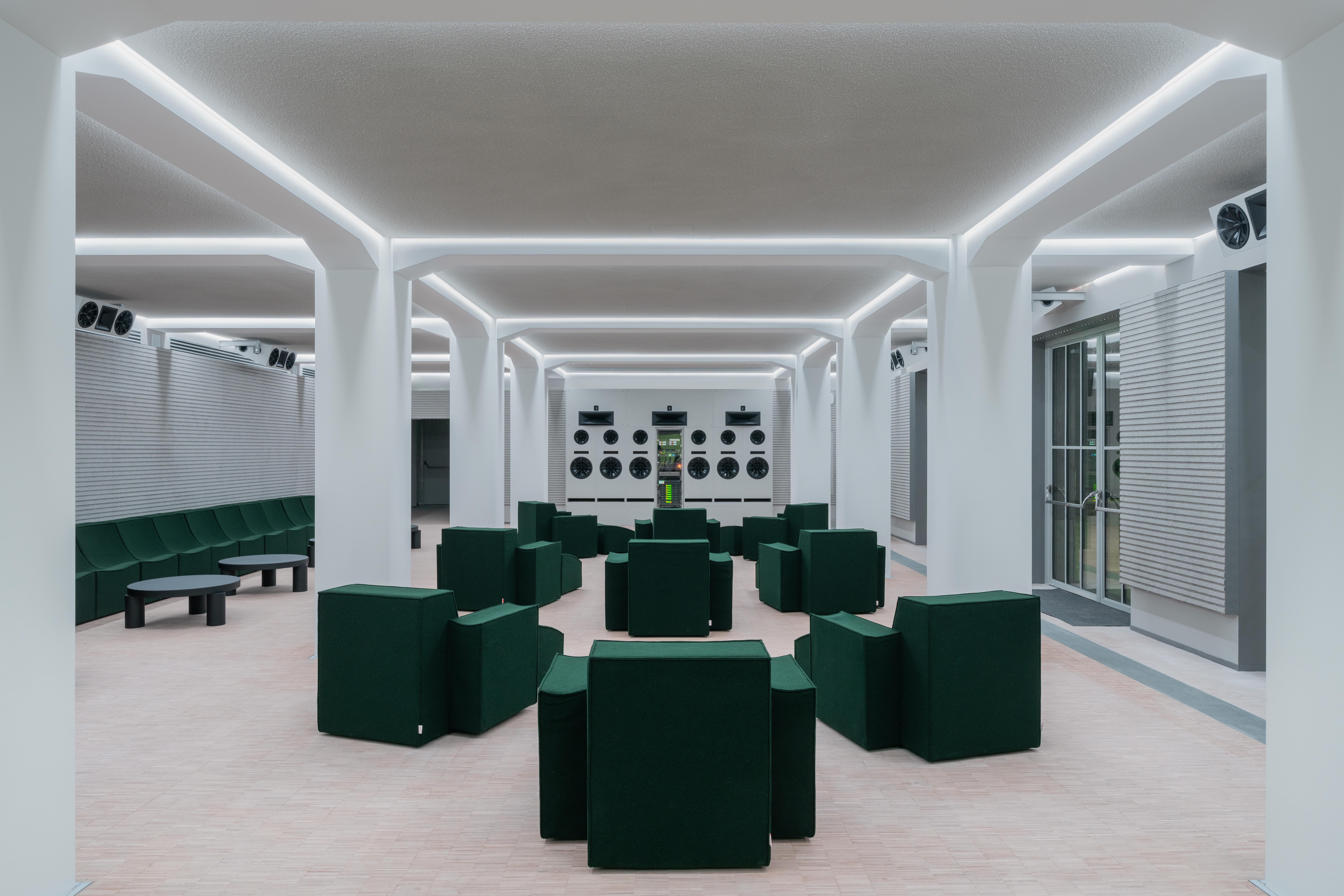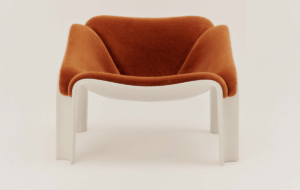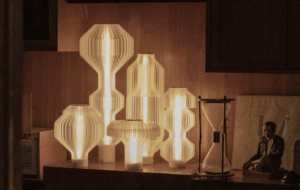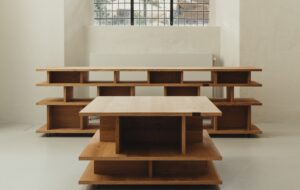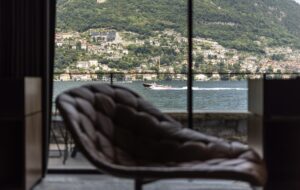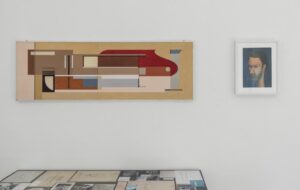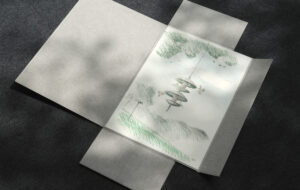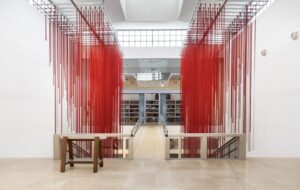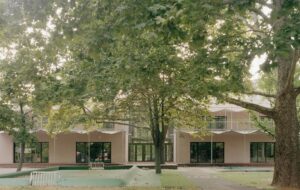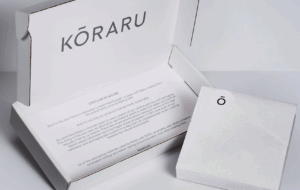|
If you grow up in Inverigo, a small Italian town 30km north of Milan, the chances are your future lies in furniture making. Here schoolgirls learn how to sew sofa covers as part of the curriculum. Sons follow fathers into the local trade, learning how to work leather, lacquer wood, fit, sand, plane and carry out all the other processes that go into making quality furniture. In this town, 600 people are employed in the factories or offices of Poliform, a leading manufacturer of designer furniture and kitchens, with facilities that sprawl over the region on eight distinct sites. The factory town, now largely outdated in Britain by smaller pockets of manufacture – those glum out-of-town industrial estates where the urban fabric disintegrates into unmarked paths and joyless buildings – is still a successful development model in this quiet part of Italy. In Inverigo, and the greater Brianza region that feeds Milan its latest showpieces, the factories present themselves as proud white forms stretching majestically across the landscape. Some shout loud, emblazoned with Poliform’s name, while others fit seamlessly with the houses around them. The town is pretty, picturesque even. Eighteen kilometres from postcard-perfect Lake Como, it’s not the usual setting for a place of serious, mechanised manufacture. The oldest of the factories is down a narrow lane, a long, single-storey block with a clay-tile roof that has a surprisingly domestic feel. Facing a row of houses adorned with colourful hanging baskets, the factory was built around the company’s original premises, Spinelli & Anzani – a craft workshop established in 1942. In 1970, Poliform’s founders Giovanni Anzani and brothers Alberto and Aldo Spinelli turned their craft into the industrial enterprise that would later take over the town but Factory One is still where the covers for all the sofas and armchairs are cut to size. Greeted by pungent leather and the whirr of laser-cutting machines as you step in the door, the place has a serious atmosphere necessitated by the precise work carried out here. In the store, tanned hides in 50 different colours are piled high on moveable trolleys, each coded according to their provenance and the order they are destined to fulfil. Workers take them one at a time and stretch them on to a frame where they can be checked for defects. Thin lines of white tape are dexterously and quickly applied to areas where the leather is weak or abnormal; green lines mark out the maximum useable area. The skill, it seems, is in using the hand as well as the eye to find patches of rough. Once marked up, the hide is transferred to a cutting bed with a vacuum base of tiny holes sucking air from below to ensure the material stays flat. At a workstation – where a dog-eared picture of the Pope has been tucked into the keyboard as if to bless the proceedings – a computer works out the optimum arrangement for templates to be cut from the leather, minimising wastage and avoiding the marked areas of weakness. No two skins are the same, the workers tell me, so a scrap of sample leather is kept on file to ensure a best match can be found if further furniture pieces are ordered in the future. In the next factory, a much larger, industrial shed of a building that lies north-east of Inverigo, the clatter of sewing machines is the distinctive sound on entering. Rows of ladies diligently run their needles down seams of leather and fabric, creating the cloak-like garments that will dress the finished furniture. In another corner, two workers are straddling one of Poliform’s bestselling armchairs, wrestling with it as they fit a sewn cover snugly over the chair’s padded bulk. The base forms or “whites” as they are known in the trade, come from a subcontractor also based in Brianza, which produces pieces to specifications for Cassina and B&B Italia as well as Poliform. Brianza’s reputation as a craftsmanship hub – Kartell, Magis and Cappellini have factories in the area too – is highly regarded and protected by the local Chamber of Commerce. The output of this factory, taken by conveyer belt to a loading dock for distribution, is inspected for quality at four-month intervals.
Poliform’s old site is now a factory where the leather is prepared, checked and cut On the short drive to Varenna, where the company operates its kitchen division, Marta Anzani, daughter of Giovanni and corporate manager of the Poliform Varenna brand, tells me what it is like working for a family-run business of this size. “You mean, did I ever want to be a dancer or an actress?” she asks when I enquire whether working for a family business is a blessing or a curse. “I suppose, when I was very young.” We hurtle along tight roads as Anzani talks to me with one casual hand on the steering wheel. It doesn’t seem to be a problem though, as the rest of the town’s traffic seems to know her car, her family and her importance. “But we’ve grown up knowing that this company is ours to take forward,” she adds. “It’s in our blood. We just know it’s ours to take care of.” The kitchen factory at Varenna is one of Poliform’s largest sites. The 150,000sq m factory floor is a traditional model of linear production, capable of producing around 150 kitchens a week to order. Here, cupboard carcasses are cut to size, finished with lacquer or laminate, assembled and then shipped out across the world. The average kitchen takes four to six weeks from order to delivery. Unlike the previous factories, the sheer scale of the machinery and mechanisms employed at Varenna borders on intimidating. The combined clamour of all the processes undertaken in this vast facility deafens and it is impeccably clean, with little trace that this is a place of human work. Forklifts whizz by on dedicated lanes while giant claws move kitchen panels around at high level. Conveyor belts churn along cabinets from behind metal cages. As I watch something like a robotic arm place a finished cabinet into a cardboard box and then tuck the flaps in around it, I’m convinced that here there is a machine solution for everything. “It’s a collaboration between machine and human,” Dario Cestari reassures me. Cestari is the export manager at= Varenna in charge of maintaining this incredible level of efficiency. “There’s no substitute for the human eye and everything that is made here gets checked by us.” Cestari visits machinery fairs like we visit furniture fairs, shopping around for the latest innovations. “The machines here are German, made specially for us,” he says. “They are customisable so once we buy them, technicians from the machine makers stay for six months to fine-tune them to our production methods. You also need to stay one step ahead of the game with hardware in kitchen design … sliding systems, 180-degree hinges and so on … the machines we use need to be able to cope with new components.” Over the next few years, Poliform will be passed from its three founders to the next generation of seven; three women and four men. Like the many furniture companies that started in the 1960s and 70s, making Italy globally synonymous with the manufacture of luxury goods, it has reached a point of handover; a new era as its founders look to retire. “It’s also exciting because it’s the first generation where women are taking the important positions,” says Anzani. As the industry increasingly calls for innovation and uniqueness in design, rather than the traditional pursuit of scale, efficiency and productivity, Anzani’s focus lies outside of the factories she has grown up around. Communication, research and development, aftercare service and honing brand identity are the elements she believes will give Poliform its competitive edge in the future. Bringing the company up to date with the digital world is essential too, it seems; Poliform’s website uses the language of social media, ranking its most popular kitchens and furniture according to its visitors’ “likes”. To reflect this new direction, the latest addition to the suite of Poliform buildings around Inverigo is the Poliform Lab. The 13,500sq m campus is designed by Italian architect Carlo Colombo and comprises a gourmet restaurant with a daily changing menu for holding client meetings; a photography studio and props department for shooting Poliform’s catalogues; the research and development arm of the company; a vast showroom and offices for logistics, marketing, styling and communication. It’s a slick, high spec hub that is a world away from that humble first factory on the site of Spinelli & Anzani’s workshop a few minutes drive away. But it’s a major sign that there is still life in European manufacturing, despite economic trouble and the draw of cheap labour in China and elsewhere. And it’s a sign of faith in the interdependence of factory and town too. With a Poliform operating out of their hometown, Inverigo’s next generation of school leavers won’t necessarily be going to the factory floor but to find a variety of careers within a global business. The choice is now on their doorstep.
Poliform’s old site is now a factory where the leather is prepared, checked and cut
The material is then delivered to another nearby factory to be fitted
A completed Poliform armchair
The company’s kitchen factory in Varenna |
Image Gianluca Giannone
Words Riya Patel |
|
|
||
|
The company’s kitchen factory in Varenna |
||

